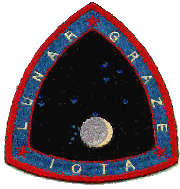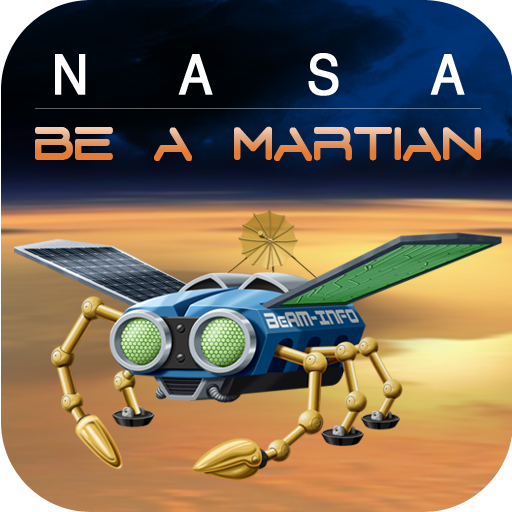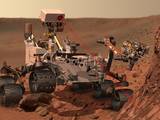|
IAAS Monthly Astronomy Newsletter (Email version) SUBSCRIBE Subscription notes below.
Donate to the IAAS! If you shop Amazon.com, sign up or sign in to smile.amazon.com and select the International Association for Astronomical Studies. 0.5% of every purchase will be donated to the group. Thank you!
Web and email hosting by |
An Open Invitation
For amateur radio operators and scanner enthusiasts, when in the Denver metro area, please join the Colorado Astronomy Net on the Rocky Mountain Radio League's 146.94 MHz and 449.825 MHz repeaters. The RMRL 146.94 repeater is also linked with the WB0WDF Cripple Creek 447.400 MHz repeater and Allstar nodes 28298, 28299 and 29436. We are also linked via Echolink, links are k0jsc-r and canoncty. More information on the WB0WDF repeater links and Allstar nodes and Echolinks can be found at k0jsc.com. The net meets on Tuesday nights at 7 P.M. Mountain Time (US).
Interested in obtaining your Amateur Radio (Ham) License or your General Radio Operator's License (GROL)? Visit the South Metro VE Team website for more information. The South Metro VE Team provides test sessions on the 1st Saturday of each month at our new Eagle Street Facility, The City of Centennial, 7272 South Eagle Street, Centennial, Colorado 80112-4244 from 9am until 1pm.
The Colorado Astronomy Net is now on Facebook.
Please be sure to "Like" us!
In this Newsletter...
- The Month - At-A-Glance
- Moon
- Planets & Dwarf Planets
- Astronomical Events
- Subscriber Gallery
- Member Meteor Sightings
- Planetary/Lunar Exploration Missions
- Mars Missions
- Astronomy Links and Other Space News
- Astronomical Lexicon
- UniverseToday
- Acknowledgments and References
- Subscription Information
- Newsletter Archives
- Items of Special Interest to Ham Radio Operators
- IAAS News
- Web Sites of Interest
Imaged March 21/22, 2001
using the 16" Kitt Peak Visitors Center telescope
as part of the Kitt Peak Advanced Observing Program.

"Neptune's atmosphere displayed wispy clouds and a raging dark storm when Voyager 2 flew past in August 1989. In typical amateur scopes, the distant world shows a small, blue-gray disk."
NASA/JPL
The Month At-A-Glance
A calendar displaying the daily astronomical events.

The Moon
Phases
- Full Moon occurs on the 6th.
- Last Quarter Moon occurs on the 13th.
- New Moon occurs on the 20th.
- First Quarter Moon occurs on the 27th.
Apogee/Perigee
- The Moon is at Perigee on the 13th, 229,820 miles from Earth.
- The Moon is at Apogee on the 27th, 251,250 miles from Earth.
Moon/Planet Pairs
- Jupiter passes 3° north of Spica on the 5th.
- The Moon passes 0.8° south of Neptune on the 6th.
- The Moon passes 4° south of Uranus on the 9th.
- Mercury passes 0.6° south of Regulus on the 10th.
- The Moon passes 0.4° north of Aldebaran on the 12th.
- Mercury passes 0.06° north of Mars on the 16th.
- The Moon passes 0.5° south of Venus on the 17th.
- The Moon passes 0.09° north of Regulus on the 18th.
- The Moon passes 0.1° north of Mars on the 18th.
- The Moon passes 0.03° south of Mercury on the 18th.
- Venus passes 0.5° north of Regulus on the 19th.
- The Moon passes 4° north of Jupiter on the 22nd.
- The Moon passes 3° north of Saturn on the 26th.
The Planets & Dwarf Planets
Planetary Reports generated by "TheSky" software. These reports provide predicted data for the planets for the first of each month for the current year. The rise and set times for the Sun and the Moon for each day of the month as well as meteor shower radiants are also included in the reports. These reports have been optimized for the Denver, Colorado location, however, the times will be approximate for other locations on Earth.(All times are local unless otherwise noted.)
|
Planetary Highlights for September
September evenings are prime for observing the gas giants, Jupiter, Saturn, Uranus and Neptune. Neptune reaches its best visibility for the year. September mornings are best for viewing the inner planets, Mercury, Venus and Mars. As with Neptune, Mercury also reaches its best visibility for the year this month. Meteor shower activity slows down this month and Comet PANSTARRS makes a U-turn passing just south of the Pleiades. The Earth reaches the Autumnal Equinox. |
|
 |
Mercury
Is stationary on the 4th. Mercury is at greatest western elongation (18° west of the Sun) on the 12th. Mercury rises at 5:46 a.m. on the 1st and about 6:26 a.m. by month's end. Look for Mercury about 30 minutes before sunrise in the east. Mercury will be best viewed during the second and third weeks of the month. Mercury moves from the constellation of Leo into Virgo this month shining at magnitude -0.7 on the 15th. |
 |
Venus
|
 |
Earth
Autumnal equinox occurs at 4:02 a.m. EDT on the 22nd. |
 |
Mars
Is finally visible again in the morning sky. Mars rises at 5:29 a.m. on the 1st and about 5:07 a.m. by month's end. Mars is visible low on the eastern horizon and is best viewed during the latter part of the month. Mars is in the constellation of Leo shining at magnitude 1.8. |
 |
Jupiter
Sets at 9:15 p.m. on the 1st and about 7:32 p.m. by month's end. Jupiter is visible low in the evening sky soon after sunset, and appears to descend even lower by the end of the month. Jupiter is in the constellation of Virgo shining at magnitude -1.7. |
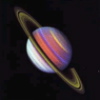 |
Saturn
|
 |
Uranus
Rises at 9:22 p.m. on the 1st and about 7:22 p.m. by month's end. Uranus is best viewed in the evening and early morning skies after midnight. Uranus is in the constellation of Pisces shining at magnitude 5.7. |
 |
Neptune
|
Dwarf Planets |
|
 |
Ceres
Rises at 3:23 a.m. on the 1st and about 2:16 a.m. by month's end. Ceres is best viewed at least an hour or so before sunrise to the southeast. Ceres moves from the constellation of Gemini into Cancer shining at magnitude 8.9. |
 |
Pluto
Sets at 2:16 a.m. on the 1st and about 12:17 a.m. by month's end. Pluto is visible in the late evening but is best viewed when it is highest in the sky toward the south-southwest. Pluto is in the constellation of Sagittarius shining at magnitude 14.2. As always, good luck at spotting Neptune, Ceres and Pluto, a large telescope and dark skies will be needed. |
Astronomical Events
 |
Meteor Showers
For more information about Meteor Showers, visit Gary Kronk's Meteor Showers Online web page. Meteor Scatter (or Meteor burst communications) - "is a radio propagation mode that exploits the ionized trails of meteors during atmospheric entry to establish brief communications paths between radio stations up to 2,250 kilometres (1,400 mi) apart." Tune your shortwave or your HF amateur radio to 54.310 MHz SSB and see if you can hear any pings. |
||||
 |
Comets
For more information about Comets, visit Gary Kronk's Cometography.com webpage. |
||||
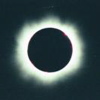
|
Eclipses
|
||||
 |
Observational Opportunities
 Asteroids
|
(From west to east)
 Ocultations
|
|
Subscriber Gallery
Featured Image
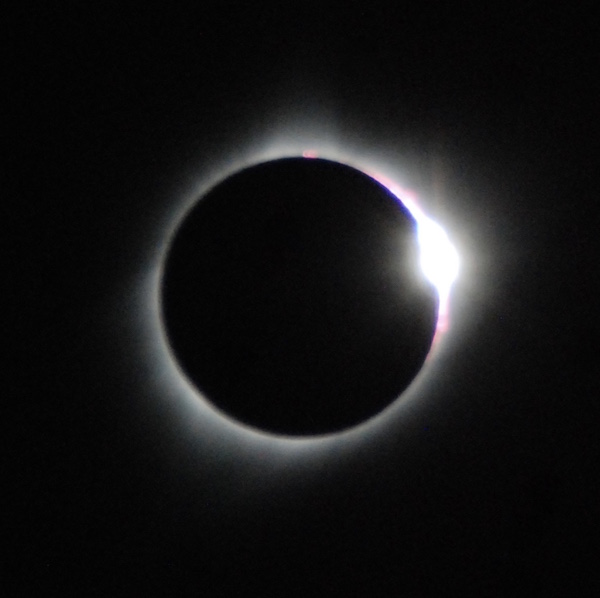
August 21, 2017 - Total Solar Eclipse - "Bailey's Beads" and the "Diamond Ring" Taken by: Burness Ansell, Location: Guernsey, WY - More to come. I will be creating a special Solar Eclipse page to showcase subscriber contributions.
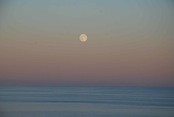 |
 |
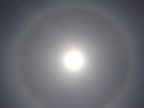 |
 |
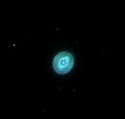 |
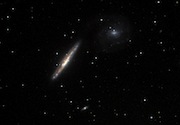 |
 |
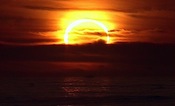 |
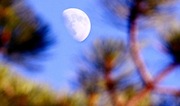 |
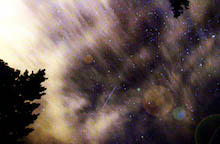 |
 |
 |
 |
 |
 |
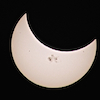 |
 |
 |
 |
 |
 |
 |
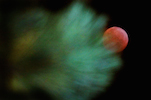 |
 |
 |
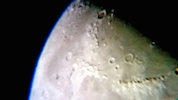 |
 |
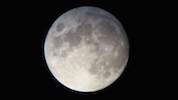 |
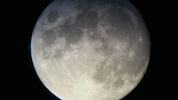 |
 |
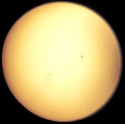 |
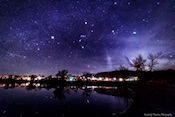 |
 |
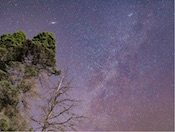 |
 |
 |
 |
 |
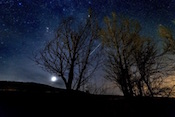 |
 |
 |
 |
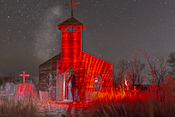 |
 |
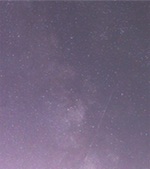 |
Member Meteor Sightings
This is a new section where I will post meteor, fireball, etc sightings that have been published on the American Meteor Society's web site. I want to make this an active section of the web pages and newsletter and would like to publish the links to member sightings. If you have any published sightings, please provide me with the links and I will post them here for all to enjoy.
| Event ID | Date/Time | Location | Observer | Link |
| 3587-2015 | 2015-11-22 17:38 MST | CO | Kevin S | 3587aw |
| 3829-2015 | 2015-12-05 18:06 MST | Highlands Ranch, CO | Burness A | 3829a |
| 3871-2015 | 2015-11-13 01:55 MST | CO | Charles N | 3871a |
Planetary/Lunar Exploration Missions
(Excerpts from recent JPL mission updates)
 |
 |
Mars Missions
Be A Martian

Astronomy Links and Other Space News
(If you have a link you would like to recommend to our readers, please feel free to submit it.)

Colorado Astronomy Links
- Brighton Astronomy Group - Astronomy in Brighton, Colorado (under construction).
- Cloudbait Observatory, Guffey Colorado - Submit your fireball reports here. Interesting, knowledgeable site.
- Colorado Amateur Satellite Net - On our net, we discuss anything that has to do with amateur satellites, ham radio with the space station, and more.
- Colorado Springs Astronomical Society - The Colorado Springs Astronomical Society (CSAS) is a nonprofit organization dedicated to the enjoyment of the nighttime sky.
- Denver Astronomical Society - Promotes the enjoyment and understanding of astronomical phenomena, history and lore by providing educational and observing opportunities for our members, general public, and outreach activities at the University of Denver's historic Chamberlin Observatory, schools, and nature centers.
- Gateway2Space - More information about the Star Light -- Star Bright Observatory.
- Little Thompson Observatory - The Little Thompson Observatory (LTO) offers no-charge public access to the wonders of the night sky, either on one of our regularly scheduled public nights, or as a private group affair. When the weather co-operates, each session includes a guided tour of the sky using our large (18") telescope.
- Mike Coletta's SatWatch - Orbiting object and satellite watching. ORBITING OBJECT TRACKING … It's the thrill of the chase. Promoting and supporting the hobby of amateur radio, Mike - KG0UFO, along with many other radio hobbyists around the globe use the reflected signals of the AF Space Fence to detect orbiting objects as they make their way over the US. - The AF Space Fence was shut down in Sept. 2013. These are recordings of Mike's many observations.
- National Space Science & Technology Institute - NSSTI runs the Star Light--Star Bright Observatory in Colorado Springs, Colorado.
- Northern Colorado Astronomical Society - The purpose of our organization is to encourage the understanding & interest in the science & hobby of astronomy.
- Rocky Mountain Star Stare - The Premier Star Party in The Rocky Mountains
- Sangre Stargazers - New astronomy club in the Wet Mountain Valley of Custer County (about 45 miles due west of Pueblo, CO.)
- Southern Colorado Astronomical Society - The Southern Colorado Astronomical Society, CSU-P and the Pueblo Nature and Raptor Center welcomes everyone to participate in the discovery of our night sky.
- Star Cruiser Bill's Astrophotography - Great astrophotography from Aurora Colorado.
Radio Astronomy Links
- HighQ Software Group - Blog of Ralph Boyd, Software engineer, amateur radio operator, radio astronomer.
- Radio Astronomy News - Radio Astronomy news and information.
- Radio Astronomy Research Posts - Radio Astronomy Research news posts and observations.
- Radio Astronomy Supplies - Radio Astronomy Supplies, the International leader in research radio telescopes for universities, observatories and individual.
- Radio JOVE Project - Radio JOVE students and amateur scientists observe and analyze natural radio emissions of Jupiter, the Sun, and our galaxy.
-
Society of Amateur Radio Astronomers - The Society of Amateur Radio Astronomers (SARA) is an international society of dedicated enthusiasts who teach, learn, trade technical information, and do their own observations of the radio sky.
Other Astronomy Links
- A Guide to the Galaxy Right from our Bedroom Window - An interesting site suggested by the students from Lexington Middle School Science Club in Nebraska. Lots of good basic astronomy information.
- A Kid's Guide to Astronomy - A great site with other links to learn about stars and astronomy for kids of all ages.
- "TheSky" - Astronomy Software by Software Bisque.
- A Sea of Stars - Voyages of a Merchant Mariner & Amateur Astronomer - I'm a retired Navy veteran, currently sailing with the US Navy's Military Sealift Command as an Operations Chief. My dominant interests are science (esp. astronomy), history and photography, and I enjoy naval and military wargaming WHEN I can find the time.
- A Short Guide to Celestial Navigation - Celestial navigation is the art and science of finding one's geographic position by means of astronomical observations, particularly by measuring altitudes of celestial objects — sun, moon, planets, or stars.
- The ARRL - Amateur Radio Relay League - Information about amateur radio and how to become an amateur radio operator.
- American Meteor Society - Provides amateur observers a place to learn about and report meteor, fireball and related sightings.
- Astrogirl Homepage - Family-friendly educational astronomy website.
- Astronomia - Online web applications that use catalogues of astronomical objects. Applications and their description are also prepared in English.
- Astronomy Picture of the Day - A different picture of the cosmos every day.
- Astronomy 2009 - This site has some good links a young, interested student wishes to share.
- Be an Astronomer right from your Window - At-home astronomy techniques.
- Black Hole Encyclopedia - Excellent site from StarDate - University of Texas McDonald Observatory
- Caelum Observatory - The LARGEST dedicated public telescope in the Southwest at the Mount Lemmon SkyCenter!
- Celestial Bodies and Astronomy.
- Celestron Telescopes - Celestron telescopes.
- Clear Skies Observing Guides - CSOG, short for Clear Skies Observing Guides is a new concept in visual amateur astronomy. It is a digital publication that will enable observers to target all deepsky objects and carbon stars within reach of their equipment.
- The Constellations and Their Stars - Good site for finding out more about the 88 constellations and their associated stars.
- CosmoQuest - The place where you map other worlds, explore out universe and contribute to science.
- Distant Suns - Desktop Astronomy package for PCs.
- EarthSky - Astronomy news.
- Groovy Adventures - Unique adventures and vacations including astronomy related vacations.
- Heavens-Above - As the name implies - What's up in the heavens, particularly satellite passes.
- The International Dark-Sky Association - To preserve and protect the nighttime environment and our heritage of dark skies.
- informED: 10 Teaching Tools for Educators - informED - Teacher Resources.
- iTelescope.net - iTelescope.Net is the world's premier network of Internet connected telescopes, allowing members to take astronomical images of the night sky for the purposes of education, scientific research and astrophotography.
- JPL Solar System Ambassador Program - "Volunteers Bringing the Solar System to the Public"
- JPL Solar System - Jet Propulsion Laboratory information on our solar system.
- K8JTK.ORG - Welcome to the home page of Jeffrey Kopcak. You will find pages and posts I wrote about my hobbies, interests, projects, and things I’m involved in.
- Kids Space Center - Telescopes and Astronomy - Another site suggested by a young student - Great info about telescopes.
- Mars Exploration, Mars Rovers Information, Facts, News, Photos - National Geographic - Mars Exploration - Investigating the Red Planet.
- Meade Advanced Products Users Group - Mapug-Astronomy Topical Archive & information resource, containing a massive 335 page archive of discussions about Meade equipment, and much more: observatories, observing lists, permanent piers, equatorial wedges, remote operations, software, eyepieces, etc.
- My Stars Live - Interactive Star Chart
- NASA - Lunar and Planetary Science - General information, Missions to Comets, Data, Press Releases, Meteors and Meteorites, Other topics of Interest.
- NASA Science News - NASA missions, updates, astronomy news, excellent resource.
- National Archives info on space exploration - Archives Library Information Center (ALIC) - Space Exploration - Information about the United States' space flight programs, including NASA missions and the astronauts who participate in the efforts to explore space.
- Predictions for Solar and Lunar Eclipses - A website dedicated to predictions and information on eclipses of the Sun and Moon.
- Skymaps.com - Free sky maps each month.
- Skywatch Sightings from NASA - This site gives you the best times to watch the ISS pass over or near your location.
- Space.com - Interesting space and astronomy articles.
- Spaceflight Now - Launches and satellite news.
- SpaceLinks/Space Careers - SPACELINKS is a specialist staffing consultancy sourcing and supplying high caliber professionals for a wide range of world class organizations in the Space and Defense industry.
- "SpaceRef.com" - SpaceRef's 21 news and reference web sites are designed to allow both the novice and specialist alike to explore outer space and Earth observation.
- Space Weather - Check out what the sun is doing as seen from space.
- Stellarium - Free, downloadable planetarium/astronomy software.
- UniverseToday - Short, interesting articles about space and related topics.
- Wikisky - WIKISKY is a non-commercial project. The main purpose of WIKISKY is to consolidate astronomical, astrophysical and other information about different space objects and astrophysical facts.
Astronomical Lexicon
Definitions of astronomical terms. Many of the astronomical terms used in this newsletter are defined here.
Read the Universe Today Newsletter by clicking on the logo.
Acknowledgments and References
Much of the information in this newsletter is from Astronomy® Magazine (Kalmbach Publishing), JPL mission status reports, the Internet, "Meteor Showers - A descriptive Catalog" by Gary W. Kronk, Sky & Telescope web pages, and other astronomical sources that I have stashed on my bookshelves.The author will accept any suggestions, constructive criticisms, and corrections. Please feel free to send me any new links or articles to share as well. I will try to accommodate any reasonable requests. Please feel free to send questions, comments, criticisms, or donations to the email address listed below. Enjoy!
More Acknowledgements and References
Subscription Information
Return to Top
FH
Keep looking UP!
73 from KIØAR
Home of KIØAR
created by Burness F. Ansell, III,
Email me
IAAS - COO, Director of Aerospace Technologies
JPL Solar System Ambassador, Colorado
last modified: September 04, 2017
URL:http://www.ki0ar.com/astro.html



 Rises at 3:49 a.m. on the 1st and about 4:54 a.m. by month's end. Look for Venus shining brightly in the early morning hours before sunrise. Venus moves from the constellation of
Rises at 3:49 a.m. on the 1st and about 4:54 a.m. by month's end. Look for Venus shining brightly in the early morning hours before sunrise. Venus moves from the constellation of  Sets at 12:25 a.m. on the 1st and about 10:27 p.m. by month's end. Saturn is easily spotted soon after sunset towards the southwest. Saturn is in the constellation of
Sets at 12:25 a.m. on the 1st and about 10:27 p.m. by month's end. Saturn is easily spotted soon after sunset towards the southwest. Saturn is in the constellation of  Reaches
Reaches 

